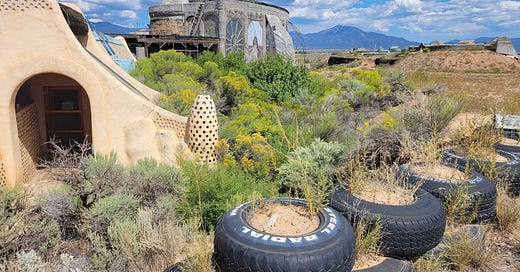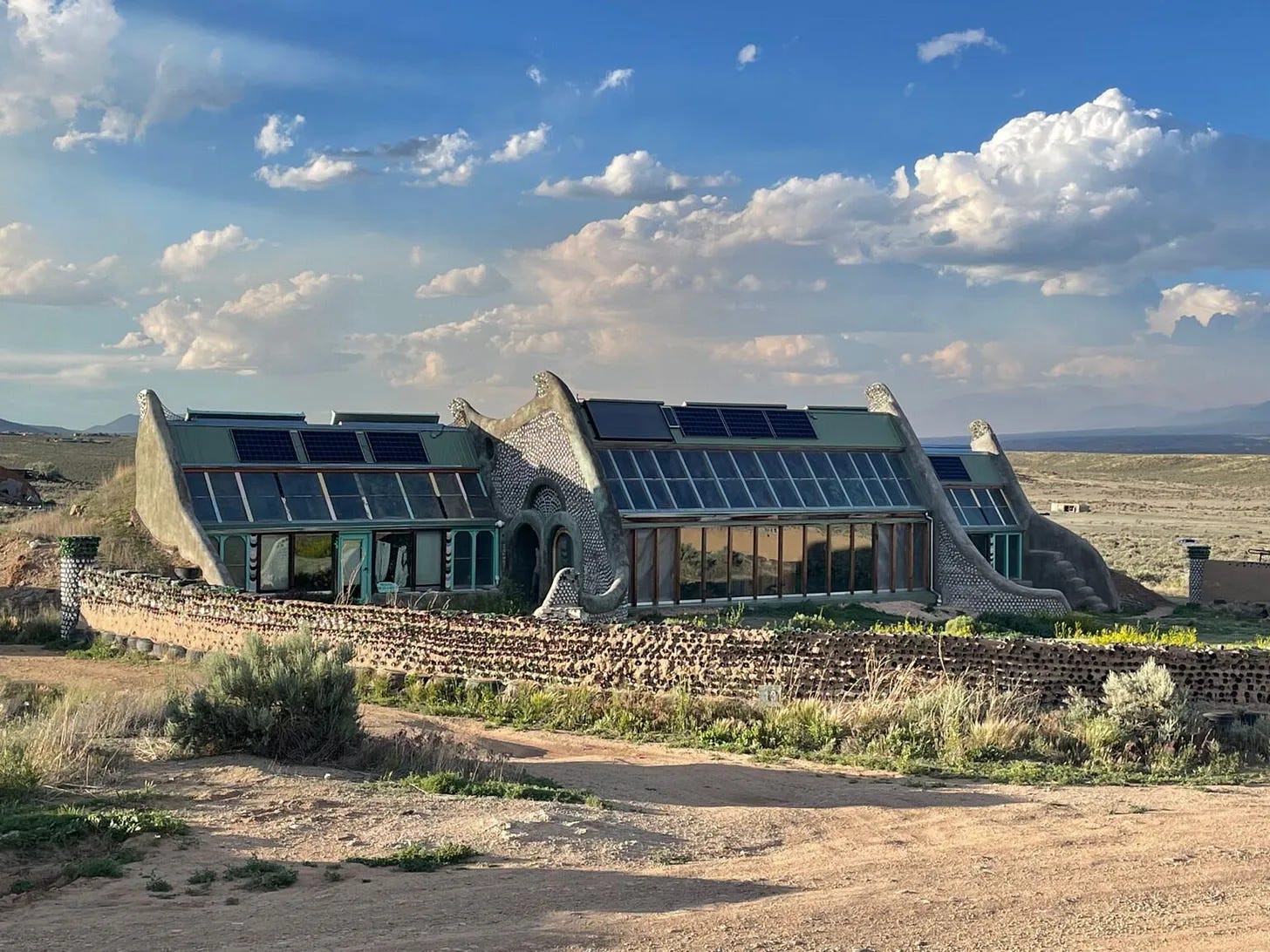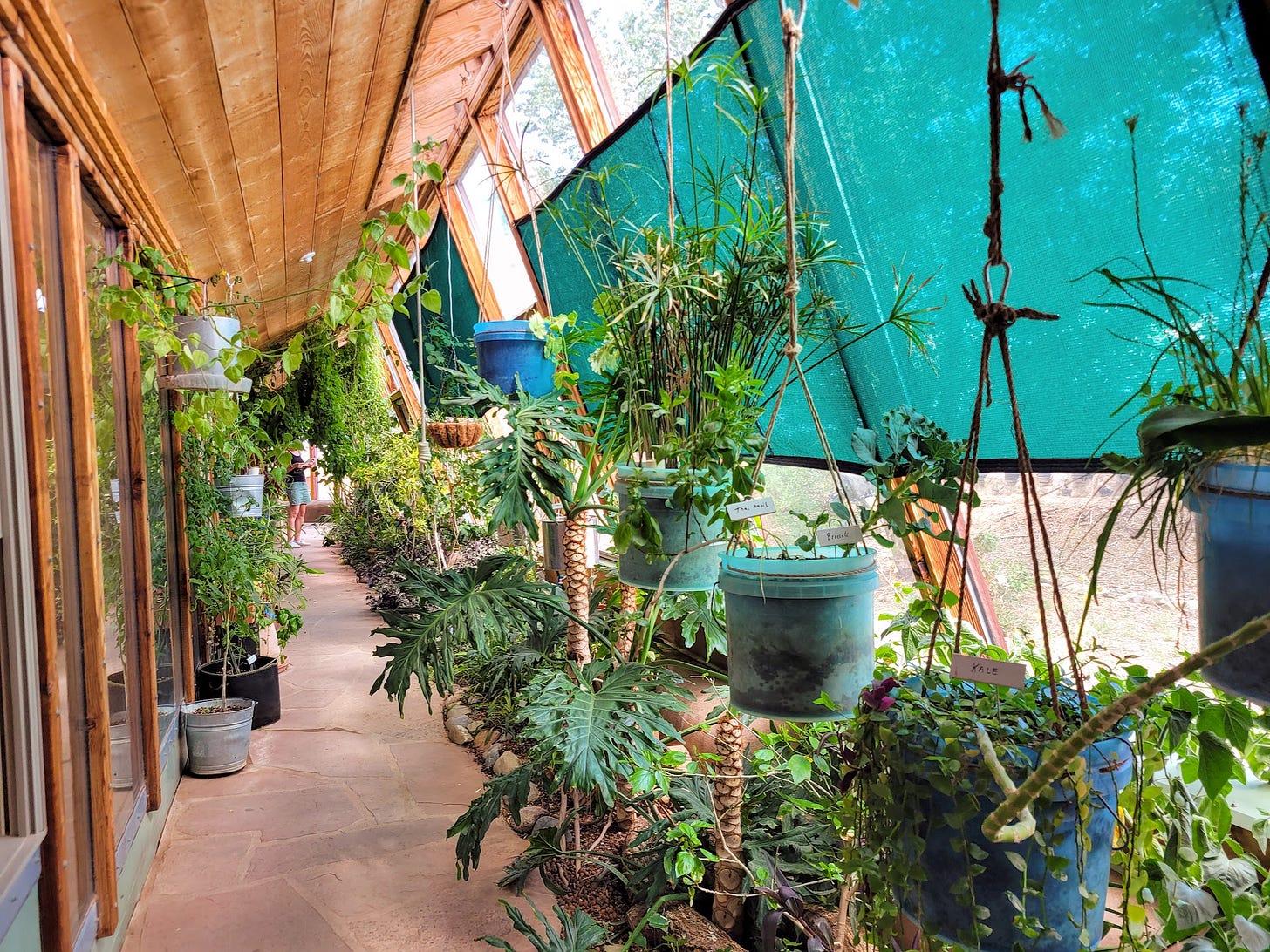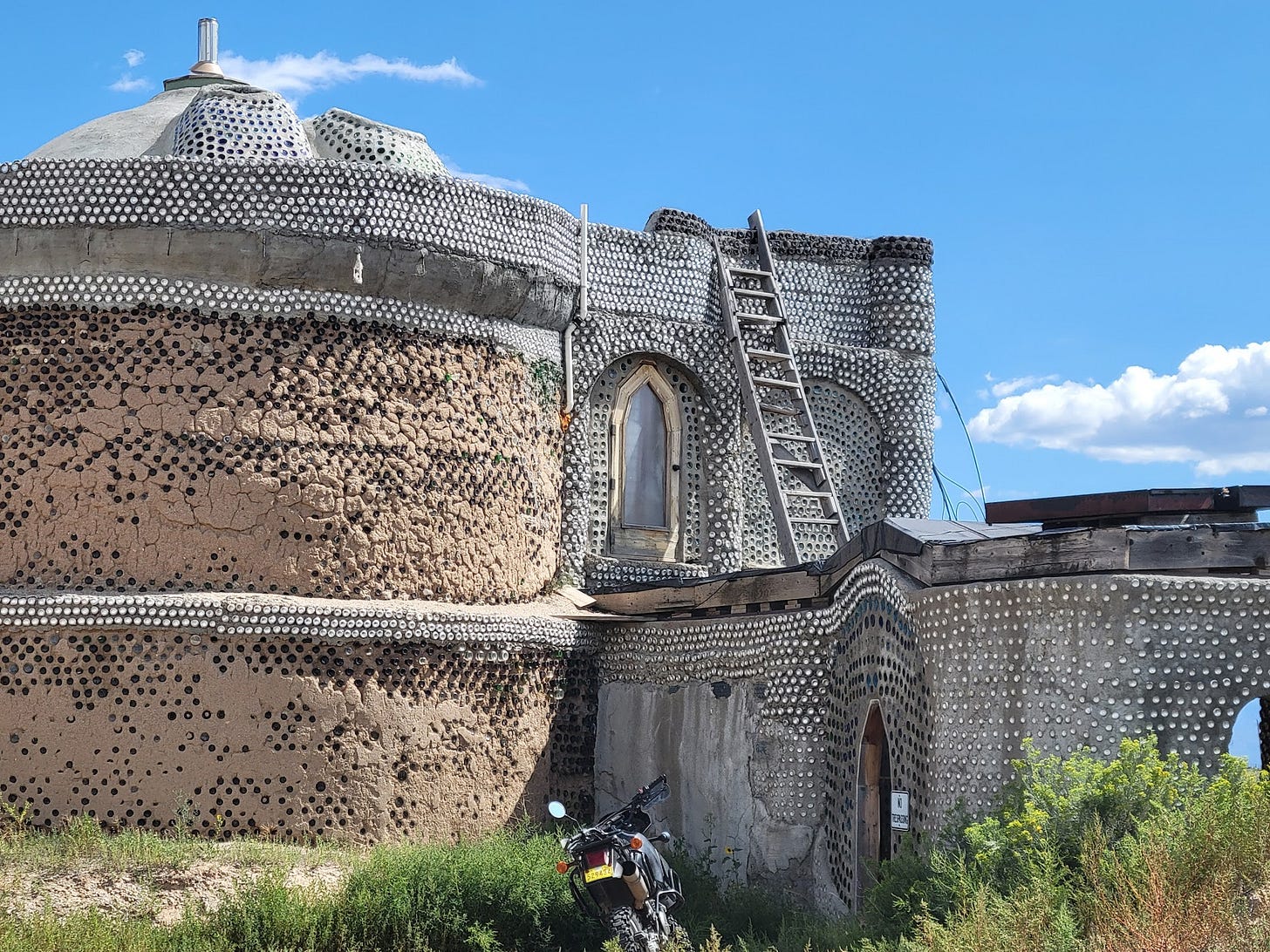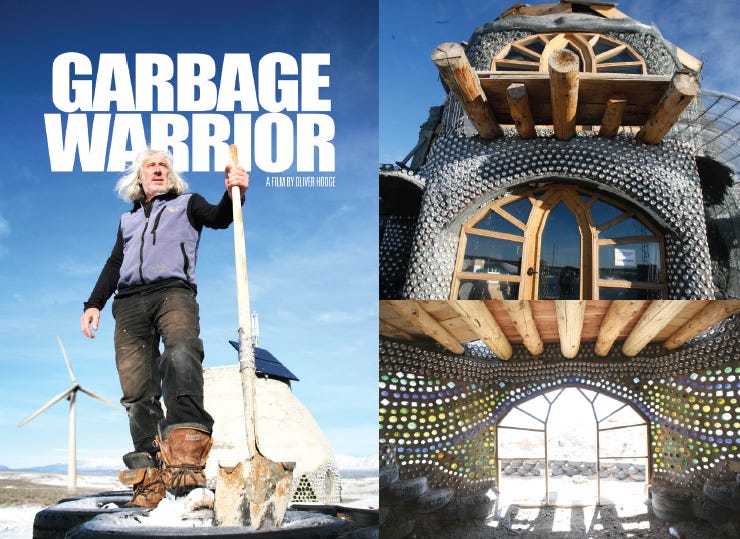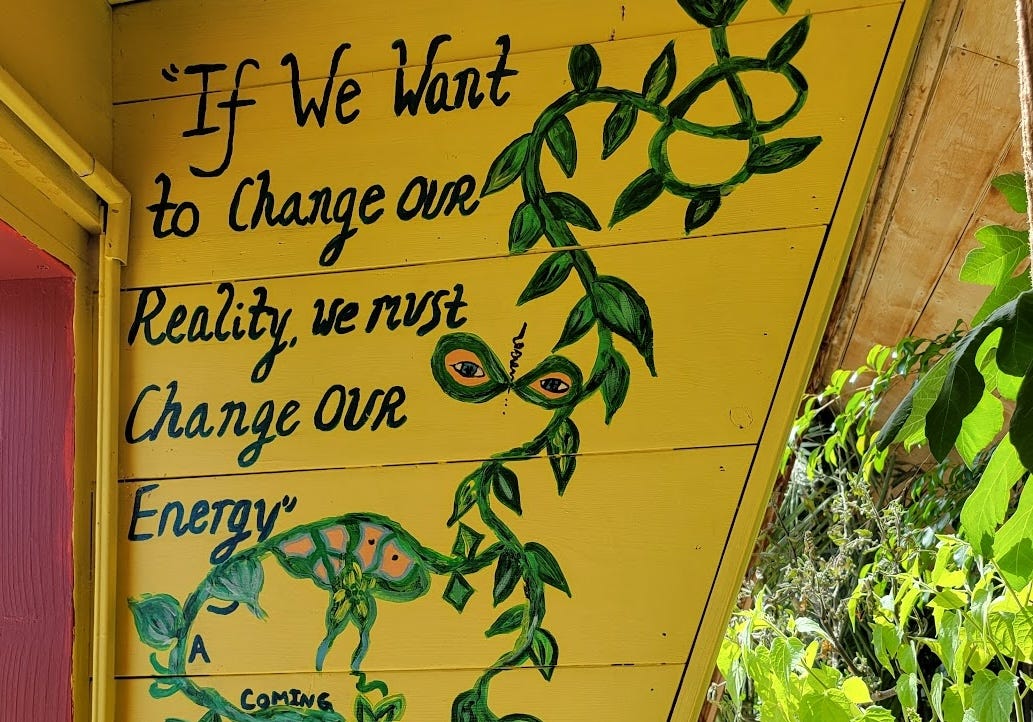Awakening in a Sick World: How Earthships and Radical Design Can Heal Us
Our built environments are making us sick, made of toxic materials that fuel chronic illness. But what if the key to healing isn’t more medicine, but a radical reimagining of our built environment?
Dear Friends,
Since childhood, I’ve been fascinated by countercultural movements—and, strangely enough, even cults.
For all their dark associations, cults reveal something intriguing: the power of a leader’s vision to inspire people to abandon their old lives and commit wholeheartedly to a new, shared vision of the future.
While unsettling, it offers a glimmer of hope — could that magnetic pull also inspire a movement to embrace a more regenerative, natural, and life-affirming world vision? One where our built environment is shaped by nature and nurtures human well-being.
With this in mind, you can imagine my excitement when I arrived in Taos, New Mexico, and found myself standing before the Earthship Bioarchecture Museum — its bold sign proclaiming:
“GREATER WORLD EARTHSHIP COMMUNITY.”

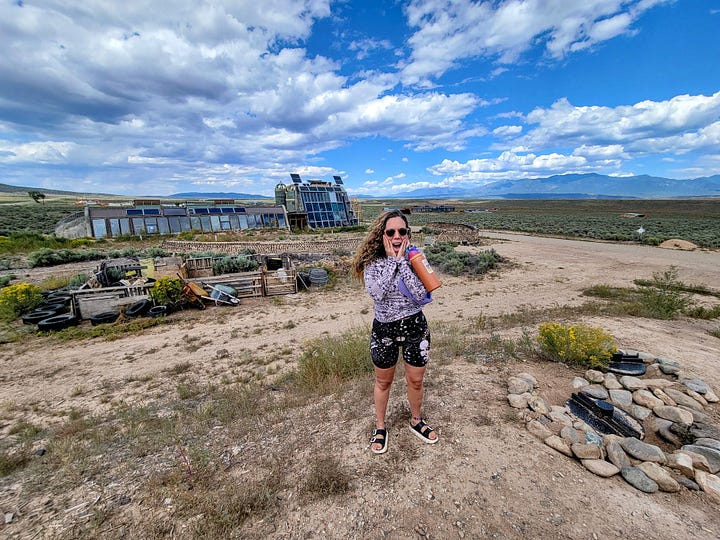
Now we’re talking!
With my cult radar buzzing, I entered the museum, eager to explore.
What is an Earthship and How Do They Work?
Designed by Taos architect Michael Reynolds, the Earthship is an off-grid home built from recycled and natural materials like earth-packed tires, cans, and bottles. These innovative structures minimize environmental impact while maximizing efficiency.
People from around the world travel to Taos to train at the Earthship Biotecture Academy, learning to construct self-sustaining homes using these principles. Beyond Taos, Earthship projects have taken root globally, providing resilient, off-grid housing for vulnerable communities facing climate disasters and economic hardship.
Each Earthship is designed to function harmoniously with nature, integrating systems for rainwater harvesting, food production, on-site sewage treatment, and renewable energy generation.
The Six Core Principles of Earthship Biotecture
Use of Natural and Recycled Materials: Earthships are built using affordable and easily accessible materials, including recycled items like earth-packed tires, bottles, cans, and reclaimed materials. This reduces environmental impact and reliance on conventional building supplies.
Passive Heating and Cooling: Earthships utilize thermal mass, strategic insulation, and passive solar design to regulate indoor temperatures naturally, eliminating the need for traditional heating and cooling systems.
Solar and Wind Energy Production: Solar panels and wind turbines provide off-grid electricity, allowing Earthship residents to generate and store their power without dependence on external electric grids.
Food Production: Integrated greenhouses allow for year-round crop production, enabling residents to grow fresh fruits, vegetables, and herbs within the home. This reduces dependence on grocery stores and creates a more self-sufficient and local lifestyle.
Water Harvesting: Rain and snow are collected from the roof and stored in cisterns, then filtered and re-circulated throughout the home for various uses, maximizing water efficiency in off-grid living.
Contained Sewage Treatment: Greywater is treated and reused for flushing toilets and irrigating indoor and outdoor plants through natural filtration systems, promoting sustainable wastewater management.
This approach to self-sustaining design extends beyond just environmental impact—it raises a deeper question: What if the spaces we inhabit could support not just the planet, but our health and well-being?
Modern Plagues: Chronic Migraines & Sick Building Syndrome
Walking through an Earthship felt like stepping into a grounded spaceship—strange yet familiar, futuristic yet connected to the past.
I noticed something profound — my body simply felt okay indoors.
I wasn’t cut off from the world around me. The air felt alive, the light natural, the materials non-toxic. This contrast woke something in me — a realization of just how spirit-crushing so many of our modern buildings are.
Our built environments (offices, homes, hospitals, schools) should harmonize with our bodies, yet instead, they are making us sick.
The dissonance between what our physiology needs and what our infrastructure provides is nothing short of a siren, warning us that we must create something different.
In an era where our surroundings shape our well-being, chronic migraines and Sick Building Syndrome (SBS) have become modern plagues — often overlooked, yet devastating to human health. Hear me out.
Chronic Migraine Disorder, a debilitating neurological condition, is on the rise, fueled by the relentless demands of modern life.
Excessive screen exposure from phones and computers, prolonged time indoors surrounded by off-gassing synthetic materials (formaldehyde abounds!), and mounting stress from overwork all contribute to a perfect storm. Our fast-paced world leaves little room for rest, while a lack of sunlight and time in nature only deepens the imbalances.
As someone who developed chronic migraines rapidly after being exposed to a home with toxic mold, I waited months to see one of California’s top neurologists. Yet, when I tried to discuss broader systemic factors—how the toxicity of my former home had pushed my once-healthy body into crisis—and asked how to address systemic inflammation, I was met with the same dismissive response: "I can't comment on that."
Western medicine is so compartmentalized that if you have a complex condition like chronic migraines, you’re sent to a neurologist who can only focus on the brain.
But migraines don’t exist in a vacuum. They are a multi-system issue—one that doctors aren’t trained to treat holistically. In the end, you’re left to navigate this complex path alone.
Meanwhile, Sick Building Syndrome (SBS)—caused by prolonged exposure to poor indoor air quality, lack of ventilation, and toxic building materials—is quietly wreaking havoc on human health. Symptoms range from headaches, fatigue, and respiratory distress to cognitive dysfunction, yet it’s rarely acknowledged as a legitimate medical concern.
Studies show alarming prevalence rates: 57% of office workers, 31% of university lab workers, and between 23% to 41% of staff in university administrative buildings report SBS symptoms.
In hospitals—ironically, places meant for healing—studies show rates between 64.7% and 74.1%.
Our bodies cannot handle the world we have built to live in.
So here we are: people are sick, poisoned by their environments, trapped in unhealthy buildings, and left with doctors who can only comment on one organ at a time.
As urbanization accelerates and people spend more time indoors, understanding and addressing these interconnected health crises is no longer optional.
We must rethink how we design the spaces we live, work, and heal in—before the very environments we created break us down.
While Earthships are imperfect—over time, recycled tires may begin to off-gas—it’s the promise of a different way forward that gives me hope.
Do the Wizards Know the Way?
While visiting the Earthship Museum, I purchased Michael Reynolds' book, A Coming of Wizards: A Manual of Human Potential.
Initially skeptical of a manifesto written by a white man claiming nocturnal visits from three wizards imparting a new vision for the future — my curiosity prevailed.
Reynolds describes these "wizards" as embodiments of innate wisdom, guiding him toward innovative thinking in harmony with Earth's natural systems.
Reynolds’ vision is certainly out there. It is a quiet rebellion against the rigid lines of conventional architecture—a call to shape our homes as if they were living, breathing extensions of the Earth itself.
Earthships are not just structures; they are ecosystems, designed to move in rhythm with nature rather than against it.
At the heart of his philosophy is a simple yet radical idea: reaching our full human potential begins with reimagining the spaces we inhabit.
To live differently, we must first think differently—letting go of inherited blueprints and embracing designs that sustain both the planet and the people who call it home.
In this way, Earthships are more than shelters; they are an invitation to step into a way of being that is regenerative, self-sufficient, and deeply aligned with the wisdom of the natural world.
What Happens After the Awakening?
Leaving the museum, I carry a quiet ache for possibility.
That evening, the sun dipped behind the Sangre de Cristo mountains and I wondered:
Can this vision ever ignite a movement strong enough to create real change?
Can I, too, one day align my physical world with the future I believe in?
Can we undo the harm of the structures we have built—stop the toxicity we’ve injected into our walls, our air, our way of life?
Can healthy, life-giving spaces ever become a birthright rather than a luxury—something for all, not just those who can afford to escape?
For now, I choose to believe that change is possible.
I choose to seek out my fellow counterculturists—the ones who refuse to accept a poisoned world as normal, who dream of something wilder, something freer, something whole.
Because this is not normal.
And we can do better.

